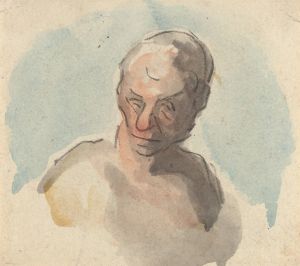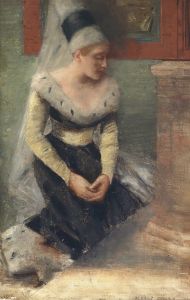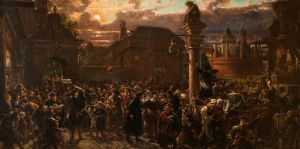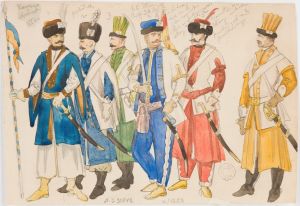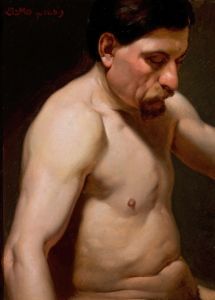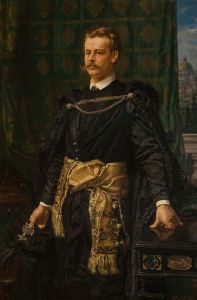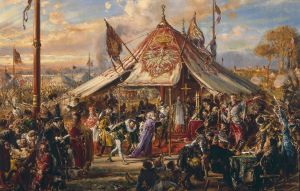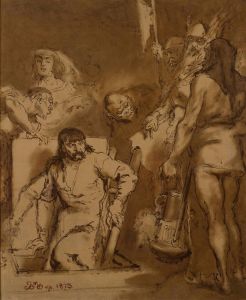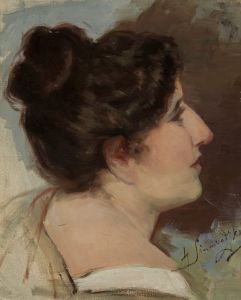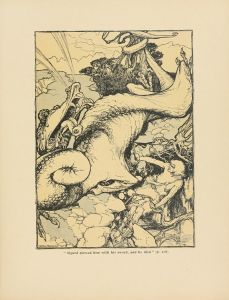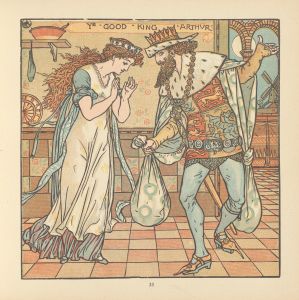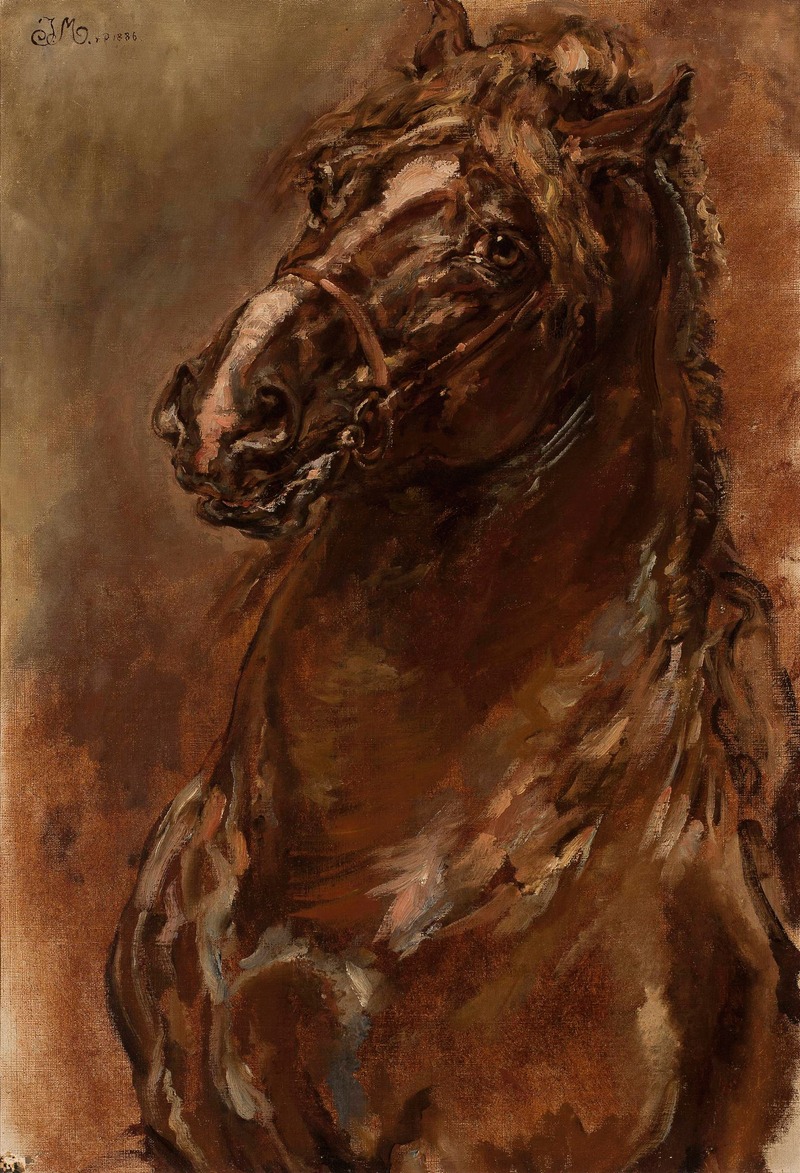
Study of horse’s head for “The Maid of Orléans”
A hand-painted replica of Jan Matejko’s masterpiece Study of horse’s head for “The Maid of Orléans”, meticulously crafted by professional artists to capture the true essence of the original. Each piece is created with museum-quality canvas and rare mineral pigments, carefully painted by experienced artists with delicate brushstrokes and rich, layered colors to perfectly recreate the texture of the original artwork. Unlike machine-printed reproductions, this hand-painted version brings the painting to life, infused with the artist’s emotions and skill in every stroke. Whether for personal collection or home decoration, it instantly elevates the artistic atmosphere of any space.
Jan Matejko, a renowned Polish painter, is celebrated for his historical paintings that capture significant moments in Polish history. One of his lesser-known works is the "Study of Horse’s Head for 'The Maid of Orléans'." This piece is a preparatory study for a larger, more comprehensive painting that Matejko intended to create, focusing on the life and legacy of Joan of Arc, also known as the Maid of Orléans.
Jan Matejko was born on June 24, 1838, in Kraków, Poland, and he became one of the most prominent figures in Polish art. His works are characterized by their historical accuracy, attention to detail, and vibrant depiction of historical events and figures. Matejko's interest in history is evident in his extensive body of work, which includes famous paintings such as "Battle of Grunwald," "Rejtan," and "The Prussian Homage."
The "Study of Horse’s Head for 'The Maid of Orléans'" is a testament to Matejko's meticulous approach to his craft. This study showcases his dedication to capturing the essence and realism of his subjects, even in preparatory sketches. The horse's head is rendered with great precision, highlighting the anatomical details and the expressive quality of the animal. This level of detail indicates Matejko's commitment to ensuring that every element of his final compositions was well-researched and accurately depicted.
Joan of Arc, the subject of the intended larger painting, is a historical figure who played a crucial role in the Hundred Years' War between France and England. Born around 1412 in Domrémy, France, Joan claimed to have received visions from saints instructing her to support Charles VII and help liberate France from English domination. She led several successful military campaigns, which culminated in the coronation of Charles VII at Reims. Joan of Arc's story has been a source of inspiration for many artists, writers, and historians over the centuries.
Matejko's interest in Joan of Arc likely stemmed from her status as a symbol of national pride and resistance, themes that resonated deeply with the Polish painter, given Poland's own struggles for independence during his lifetime. Although the larger painting of "The Maid of Orléans" was never completed, the study of the horse's head remains an important piece that offers insight into Matejko's artistic process and his ability to convey emotion and realism through his work.
The "Study of Horse’s Head for 'The Maid of Orléans'" is housed in the collection of the National Museum in Kraków, Poland. This institution holds many of Matejko's works and serves as a testament to his enduring legacy in Polish art and culture. The study is appreciated not only for its artistic merit but also for its historical significance, providing a glimpse into the preparatory stages of a project that, although never realized, reflects Matejko's vision and dedication to his craft.
In summary, Jan Matejko's "Study of Horse’s Head for 'The Maid of Orléans'" is a detailed and expressive preparatory work that underscores the artist's commitment to historical accuracy and realism. It serves as a valuable piece within Matejko's oeuvre, offering insights into his artistic process and his fascination with historical subjects.





